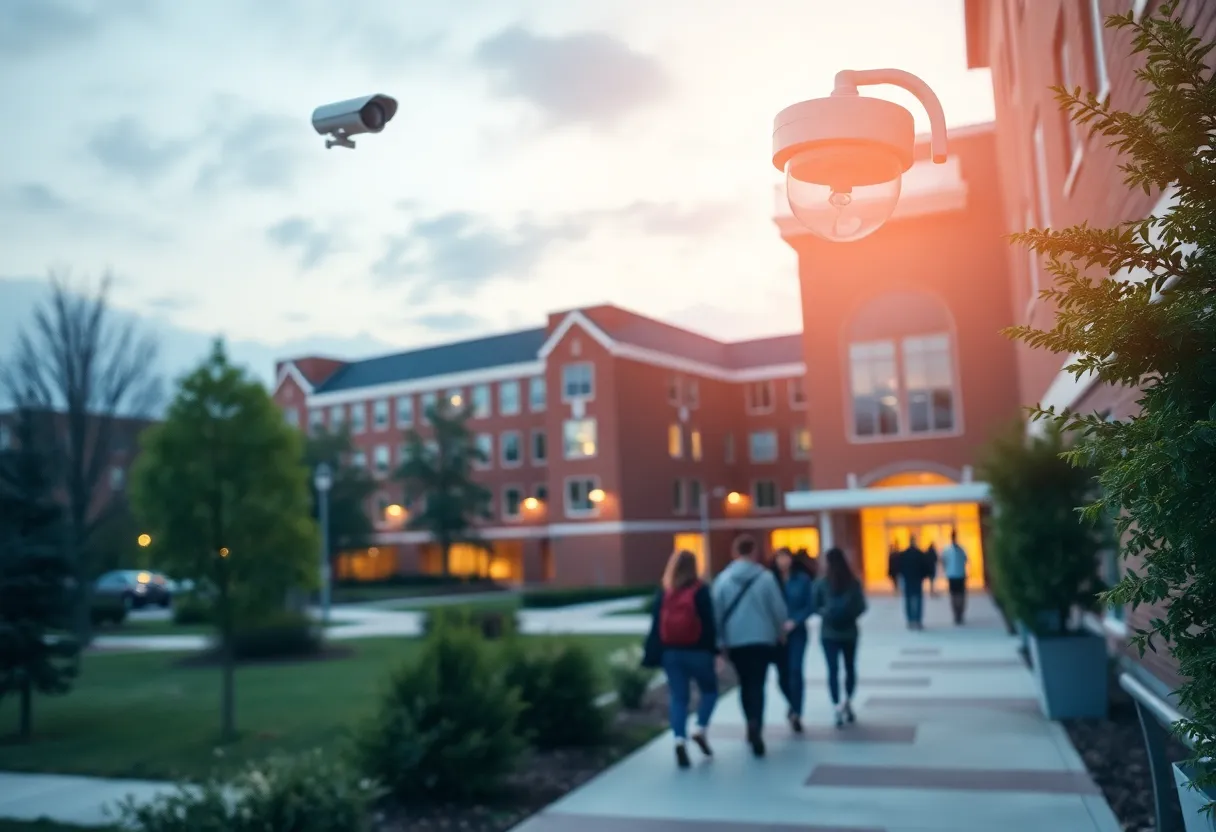Albuquerque, NM, October 19, 2025
New statistics from the New Mexico Department of Public Safety indicate a 15% decrease in overall campus crime across New Mexico’s colleges and universities. While many institutions saw reductions in incidents, the University of New Mexico reported an 8% increase in sexual assaults, prompting campus leaders to enhance safety measures and training. Improvements in security protocols and awareness campaigns are credited with the overall decline, yet the rise in reported sexual assaults highlights the need for ongoing vigilance in ensuring student safety.
New Mexico Colleges See 15% Drop in Campus Crime, But UNM Reports Rise in Sexual Assaults
Albuquerque, NM – A new report from the New Mexico Department of Public Safety reveals a notable decrease in overall crime on college and university campuses across the state, with incidents dropping by 15% compared to the previous year. However, the University of New Mexico (UNM) experienced an 8% increase in reported sexual assaults, highlighting ongoing challenges in student safety.
The annual crime statistics, released today, cover data from all public higher education institutions in New Mexico. The decline in total on-campus incidents marks a positive trend following years of fluctuating reports during and after the pandemic. Officials point to improved security protocols and expanded awareness initiatives as key factors behind the reduction. These measures include upgraded lighting, increased patrols, and educational campaigns aimed at preventing various types of crimes.
Breakdown of Crime Trends
Among the institutions analyzed, Central New Mexico Community College (CNMCC) stood out with the lowest number of incidents, reporting zero violent crimes for the year. This achievement is largely credited to the recent installation of advanced surveillance technology, including high-definition cameras and real-time monitoring systems. Other colleges, such as New Mexico State University and smaller community campuses, also contributed to the statewide decline, with reductions in property crimes like theft and vandalism making up a significant portion of the overall drop.
Despite the positive developments, the uptick in sexual assault reports at UNM has drawn attention from campus leaders. The university, which serves a large portion of the state’s 40,000-plus students in Albuquerque’s higher education sector, saw the increase amid broader efforts to encourage reporting. This rise is viewed by some as a sign of greater trust in the reporting process rather than a surge in occurrences, though it underscores the need for continued vigilance.
Response and Prevention Efforts
In response to the findings, UNM administrators have announced plans to roll out additional training sessions for students and staff. These programs will focus on recognizing warning signs, understanding consent, and accessing support services. A key component involves promoting the campus advocacy center, which provides confidential counseling, legal advice, and medical referrals for survivors. The center has already assisted hundreds of individuals in recent years and aims to expand its reach with the new initiatives.
Local law enforcement agencies are also stepping up collaboration with universities to tackle emerging safety concerns. Joint task forces and shared intelligence have been established to address issues like substance-related incidents and off-campus threats that impact student well-being. These partnerships extend to regular safety audits and community outreach events, fostering a more integrated approach to campus protection.
Broader Context and Implications
The report’s data reflects a comprehensive review of incidents reported under the Clery Act, which mandates transparency in campus crime statistics. New Mexico’s higher education system, encompassing institutions in Albuquerque and beyond, educates over 100,000 students statewide. The 15% decline is particularly encouraging for urban campuses like UNM and CNMCC, where high enrollment numbers can complicate security logistics.
Background on the improvements traces back to post-pandemic adjustments, when many schools invested in technology and personnel to handle reduced in-person operations safely. Awareness programs, often funded through state grants, have emphasized bystander intervention and mental health support, contributing to fewer altercations and harassment cases. However, the sexual assault increase at UNM serves as a reminder that certain areas require targeted interventions.
Stakeholders across New Mexico’s educational landscape are monitoring these trends closely, with expectations that sustained efforts will yield further reductions. For the thousands of students navigating daily life on these campuses, the combination of declining overall crime and proactive responses offers a foundation for a safer academic environment. As the new academic year progresses, ongoing evaluations will help refine strategies to maintain this momentum.
Long-Term Outlook
Looking ahead, the Department of Public Safety plans to release quarterly updates to track progress. Universities are encouraged to share best practices, potentially leading to statewide standards for security enhancements. In Albuquerque alone, the focus on the 40,000+ students highlights the urgency of these measures, ensuring that higher education remains a secure space for learning and growth.
Frequently Asked Questions (FAQ)
What is the overall change in crime rates at New Mexico colleges and universities?
A report released today by the New Mexico Department of Public Safety shows a 15% decline in on-campus incidents compared to 2024.
How have sexual assault reports changed at the University of New Mexico?
Sexual assault reports rose by 8% at UNM.
What factors contributed to the decline in campus crime?
Officials attribute the overall drop to enhanced security measures and awareness programs implemented post-pandemic.
Which college reported the lowest crime incidents?
Central New Mexico Community College reported the lowest incidents, with zero violent crimes, thanks to new surveillance tech.
What new initiatives is UNM launching?
UNM administrators are launching additional training sessions for students and staff, emphasizing resources like the campus advocacy center.
How is law enforcement involved?
Local law enforcement is partnering with universities to address rising concerns, ensuring a safer environment for the 40,000+ students across Albuquerque’s higher education institutions.
Key Crime Trends at New Mexico Colleges
| Category | Change from 2024 | Details |
|---|---|---|
| Overall On-Campus Incidents | 15% Decline | Statewide drop attributed to enhanced security and awareness programs |
| Sexual Assaults at UNM | 8% Increase | Rise in reports at the University of New Mexico |
| Violent Crimes at CNMCC | Zero Incidents | Lowest reports due to new surveillance technology |
| Student Population in Albuquerque | 40,000+ | Affected by partnerships with local law enforcement |
| UNM Training Initiatives | New Sessions | Focus on resources like the campus advocacy center |
Deeper Dive: News & Info About This Topic
HERE Resources
Rising Crime Trends at New Mexico Colleges Highlight Safety Concerns





